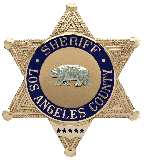The Los Angeles County Sheriff's Department's (LASD) anti-gang efforts have been in existence for more than 40 years. The Department's first team was known as the "Street Gang Detail." This unit evolved into what is now Operation Safe Streets Bureau (OSS). For several years, the gang detail was made up of two sergeants and a deputy. Their duties were primarily advisory and consisted of maintaining limited gang files and keeping local stations and Department executives informed of the activities of local street gangs. These members would also lecture to citizen groups and law enforcement on the subject of gangs.
In 1972 the Street Gang Detail expanded with the addition of three personnel and began to take a more pro-active stance against criminal street gangs. The unit's personnel were assigned to specific stations. The Street Gang Detail began handling gang-related investigations and providing manpower for anti-gang operations. As the personnel's expertise developed, they began to testify as experts on criminal gang-related cases and before legislative panels. Their expertise led to requests throughout the nation to lecture about criminal street gangs to other law enforcement agencies, universities, and colleges. The unit also designed a street gang statistical system and began to collect gang-related crime statistics.
During the mid to late 1970's, criminal street gangs, and gang-related violence, began to grow at a phenomenal rate. In response, LASD began to search for an effective response. Before a viable program could be implemented, the passage of Proposition 13 resulted in serious cut-backs. These cut-backs signaled the demise of many programs. Fortunately, one of the gang investigators had previously designed a program entitled "Operation Hickory." This program targeted the "Hickory Street" gang in the Firestone Station area. The basis for the program was to assign a gang investigator, a Deputy District Attorney, and a Probation Officer to handle all crime emanating from that targeted gang. The gang violence committed by the targeted members dropped dramatically and had a positive collateral effect on adjacent gangs.
In response to the escalating violence, LASD applied for a federal grant through the Office of Juvenile Justice and Delinquency Prevention. The request proposed to replicate Operation Hickory at the East Los Angeles Station. The Federal Department of Justice approved the plan with enough funding for expansion to more than one station. In 1979 LASD, using the awarded grant funding, created Operation Safe Streets with two sergeants and twelve deputies. OSS was divided into four teams assigned to East Los Angeles Station, Lynwood Station, Lennox Station, and Pico Rivera Station. Using Operation Hickory as a model, each team targeted the most active gang at those stations. The initial grant also included funding for a Deputy District Attorney and a Probation Officer to assist in the prosecution of the gangs and provide close supervision of those on probation. The assigned prosecutor came from a newly established Hardcore Gang Unit within the District Attorney's Office and was directed to provide vertical prosecution on the targeted gang related cases. The Probation Officer was assigned to provide intense supervision to all gang members of the four targeted gangs.
It became apparent very early on that the program was successful, and when the grant period was completed, the gang violence statistics associated with the targeted gangs had dropped dramatically. In the grant application the Department stated that the goal of the program was to decrease the amount of gang violence of the targeted gangs by 15%. In each targeted gang, the violence was reduced over 50%, and in one case the gang activity dropped over 90%, with that gang virtually disappearing from the gang scene for several years.
As the unit's success became evident, other LASD stations that were experiencing gang problems requested OSS teams. The unit began to expand adding Industry Station and Norwalk Station in February 1981, Men's Central Jail Team in March 1982, Carson Station in August 1982, Lakewood Station in November 1982, Walnut Station in November of 1988, and Temple Station in July 1990. In 1988 the unit was renamed Operation Safe Streets Bureau and added Gang Enforcement Teams (GET). GET provided OSS with a uniform suppression unit to target gang activity throughout the LASD jurisdiction. Today, OSS staffed with more than 200 personnel assigned to 12 LASD stations, local, State and Federal gang task-force operations.
From our inception, the success of OSS investigators has been the established of a low case-load for each investigator and targeting the most violent criminal street gangs. This strategy has provided a successful approach to the gang violence committed by Los Angeles criminal street gangs.
|
 Operation Safe Streets Bureau
Operation Safe Streets Bureau



|